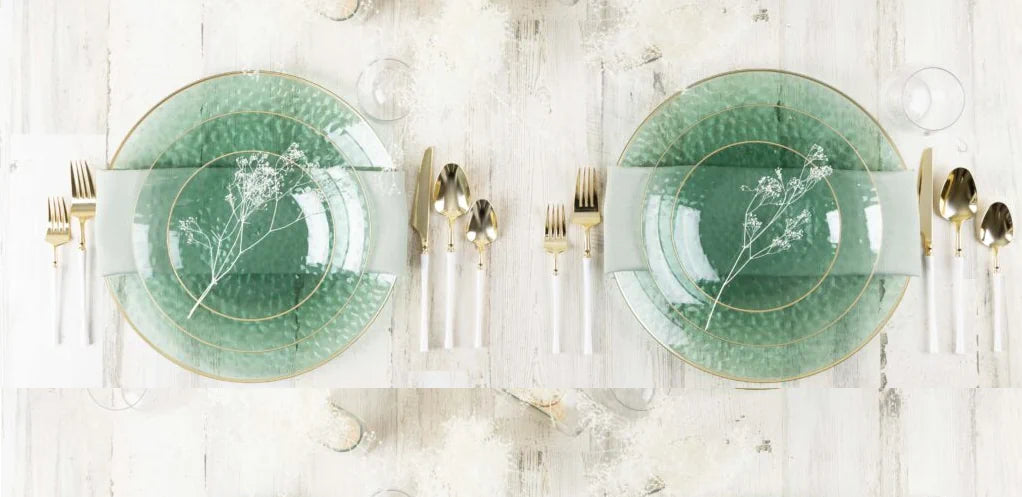Paper Dinnerware vs. Real Dinnerware
When planning a meal or event, one of the key decisions is whether to use paper dinnerware or real dinnerware. Factors such as convenience, aesthetics, cost, and environmental impact can help you decide.
Paper Dinnerware: Convenience & Ease
Paper plates, cups, and utensils are a go-to choice for casual gatherings, large-scale events, and outdoor parties. Their primary benefits include:
✅ Convenience – No washing required; simply dispose of them after use.
✅ Affordability – Generally cheaper than purchasing or renting real dinnerware.
✅ Lightweight & Portable – Easy to transport, making them ideal for picnics and on-the-go events.
✅ Variety & Customization – Available in many colors, designs, and themes to match any occasion.
However, paper dinnerware also has drawbacks:
❌ Durability – Less sturdy than real plates, making them prone to bending or leaking.
❌ Environmental Impact – Many paper products contribute to waste unless they are compostable or recyclable.
❌ Aesthetic Limitation – While stylish options exist, paperware may not match the elegance of real dinnerware for formal events.
Real Dinnerware: Elegance & Sustainability
Using ceramic, glass, or porcelain dinnerware elevates any dining experience and comes with distinct advantages:
✅ Durability & Functionality – Can handle hot foods, cutting pressure, and heavy portions without breaking.
✅ Aesthetic Appeal – Adds a touch of elegance and sophistication to any meal, making it ideal for weddings, fine dining, and formal gatherings.
✅ Eco-Friendly Choice – Reusable and long-lasting, reducing waste and environmental impact.
✅ Enhanced Dining Experience – Eating from real plates with proper silverware enhances the overall perception of a meal.
Despite its advantages, real dinnerware has some downsides:
❌ Requires Cleaning – Washing dishes after an event can be time-consuming and labor-intensive.
❌ Higher Cost – Purchasing or renting real dinnerware is often more expensive upfront.
❌ Breakability – Fragile materials like glass or porcelain can chip or break, requiring careful handling.
Which Should You Choose?
• For casual events, outdoor gatherings, or large-scale parties, paper dinnerware is a practical, cost-effective, and hassle-free choice.
• For formal occasions, intimate dinners, or environmentally conscious events, real dinnerware offers a refined experience and long-term sustainability.
• A hybrid approach can work well—using real dinnerware for main courses and paper options for desserts or drinks.
Ultimately, the decision depends on your priorities: convenience versus elegance, affordability versus sustainability, and effort versus experience.












)
)





































